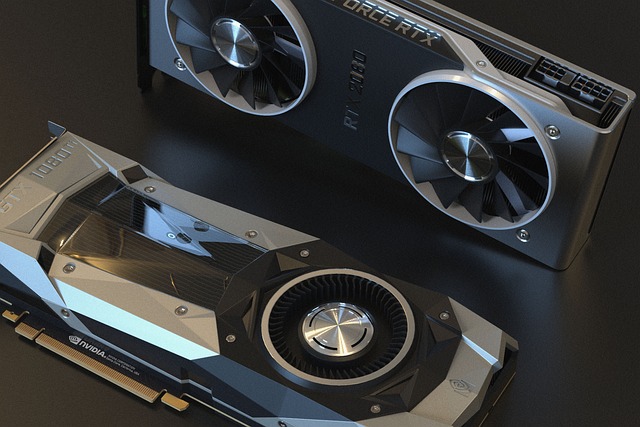The Ideal Device Configuration for High-Octane Online Games
- Category: Pics |
- 24 Oct, 2025 |
- Views: 363 |

You boot up the game. The intro loads, and you’re in. But something’s off. Frame drops. Lag spikes. Stuttering audio. You check your specs. They looked fine on paper. But paper doesn’t win matches. It also doesn’t carry squads. Most importantly, it doesn’t survive high-octane gaming.
In 2025, games aren’t just prettier. They’re heavier. They demand more. More power. More speed. More bandwidth. Whether it’s Call of Duty: Infinite Warfare, CyberSphere 2078, or WOW Vegas’s live dealer blackjack, your device needs to keep up. Or get left behind.
Graphics Card: The Heartbeat of Visuals
Let’s start with the GPU. It’s the engine behind every frame. Every explosion. Every shadow. Every ray of light. In 2025, the sweet spot for high-octane gaming is the NVIDIA RTX 5070 or AMD RX 9070. These cards crush 1440p gaming. They handle ray tracing. They support DLSS 4.0. They don’t flinch.
If you’re pushing 4K or dabbling in VR, step up to the RTX 5080 or RX 9070 XT. These beasts deliver cinematic visuals without choking. But if you’re sticking to 1080p, the RTX 5060 is more than enough. Don’t overspend. Match your GPU to your monitor. Not your ego.
Processor: The Brain That Keeps Up
Your CPU doesn’t render frames. But it keeps the game alive. It handles physics. AI. Logic. Background apps. In 2025, the go-to chips are AMD Ryzen 7 9600X or Intel Core Ultra 5 265k. They’re fast. Efficient. Reliable.
Streaming? Editing? Running Discord and Chrome while gaming? Then go big. Ryzen 9 9950X3D or Intel Ultra 9 285k. These chips pack extra cache. More cores. More headroom. They don’t just run games. They run everything.
Memory: No Room for Bottlenecks
RAM used to be an afterthought. Not anymore. Games are bigger. Background tasks are heavier. Multitasking is constant. In 2025, 32GB DDR5 is the new standard. Anything less and you’ll feel it. Stutters. Freezes. Slowdowns.
For AMD setups, aim for 6000–6400MHz. For Intel, push 7000–8000MHz. Faster RAM helps your CPU and GPU communicate more effectively. It’s not just about capacity. It’s about speed. It’s about flow.
Storage: Speed Over Size
SSDs aren’t optional. They’re essential. Games load faster. Systems boot quicker. Everything feels snappier. But don’t chase Gen 5 drives unless you’re benchmarking. 1TB or 2TB PCIe Gen 4 NVMe SSDs are plenty fast for gaming.
Need space for media, mods, or backups? Add a secondary SATA SSD or even an HDD. But keep your OS and games on NVMe. That’s where speed matters. If you don’t want to clutter your space, visit the website directly and play on the go.
Platforms that offer a considerable bonus of 2 dollar or more are welcome. Try free slots if you want to get a good free bonus and play a few rounds for free.
Power Supply: Stability Is Non-Negotiable
Your PSU doesn’t boost FPS. But it keeps your system alive. A bad unit can fry components and crash games. Kill performance. For mid-range builds, choose a 750W, 80+ Gold-certified PSU. For high-end rigs, push 850W or more.
Modular cables help airflow. Reliable brands like Be Quiet or Seasonic keep things quiet and cool. Don’t cheap out here. Stability is everything.
Cooling: Heat Kills Performance
High-octane gaming generates heat. Lots of it. CPUs throttle and also sweat. Fans scream. You need airflow. Then you also need control.
Use cases with mesh front panels. Add intake and exhaust fans. For high-end CPUs, go with 240mm or 360mm AIO liquid cooling. Prefer silence? Air coolers from DeepCool or Be Quiet do the job.
Poor airflow means throttling. Throttling means lag. Lag means death. Keep it cool.
Monitor: Where Frames Meet Eyes
Your monitor is your window. Don’t fog it up. For competitive gaming, go 1440p at 144Hz or higher. For cinematic immersion, go 4K at 120Hz. OLED and mini-LED panels are finally affordable. They offer deep blacks. Moreover, they come up with a fast response and certainly no ghosting.
Curved screens help with immersion. Ultra-wide formats give you more real estate. But don’t chase resolution without GPU power. Match your screen to your rig.
Online Casino Games: Smoothness Matters Too
Even casino games need performance. WOW Vegas, McLuck, Jackpota, they run live dealers, real-time animations, and interactive UI. Lag ruins the experience. Missed bets. Frozen reels. Broken immersion.
If you want a platform that is highly optimized to be played on various configurations, try Casino Ricky. The platform has a combination of several that demand a high-octane setup, but can also be optimized for simpler configurations.
You don’t need RTX 5080 for slots. But you do need a stable system. A quad-core CPU. At least 8GB RAM. A decent GPU with 4GB VRAM. And fast internet. That’s the baseline for smooth casino gaming.
Peripherals: Precision Over Flash
Your mouse. Your keyboard. Your headset. These are your tools. Don’t go cheap. Mechanical switches. Low-latency sensors. Directional audio. These matter.
Wireless gear is fine if latency is low. Wired gear is safer. More consistent. More responsive. Choose what feels right, what reacts fast, and lasts.
Internet: The Invisible Backbone
You can have the best rig. But if your ping spikes, it’s over. Use Ethernet if possible. If not, go Wi-Fi 6E. Avoid crowded networks. Prioritize your device. Use gaming routers with QoS settings.
Online games, especially competitive ones, live and die by latency. Casino games, too. A dropped connection during a live dealer round? That’s money lost. That’s trust broken.
Final Thoughts: Build Smart, Not Just Big
High-octane gaming isn’t about maxing every spec. It’s about balance. About synergy. About knowing what matters. GPU drives visuals. CPU keeps things smooth. RAM prevents stutters. SSDs cut load times. Cooling keeps it all alive.
Don’t chase hype. Don’t overspend on RGB. Don’t buy 64GB RAM unless you’re editing 8K video. Focus on what boosts performance and what improves experience. Your goal is a set-up that lasts. Because in the end, it’s not about specs. It’s about gameplay. About immersion. About winning.

